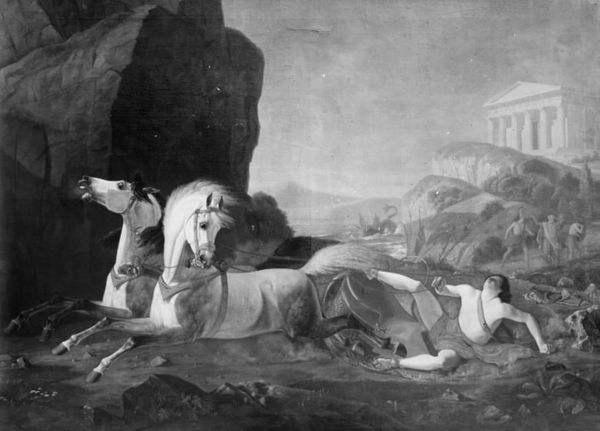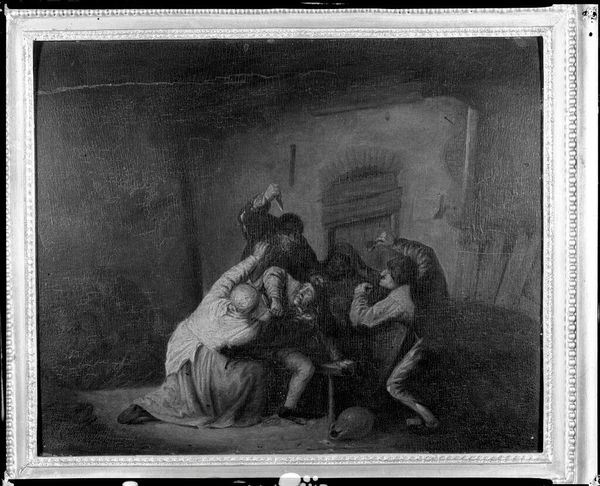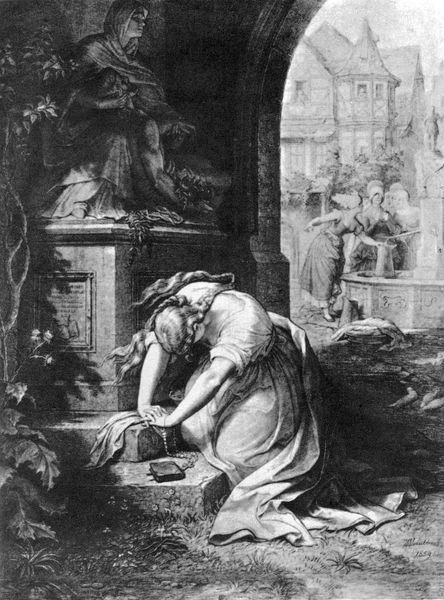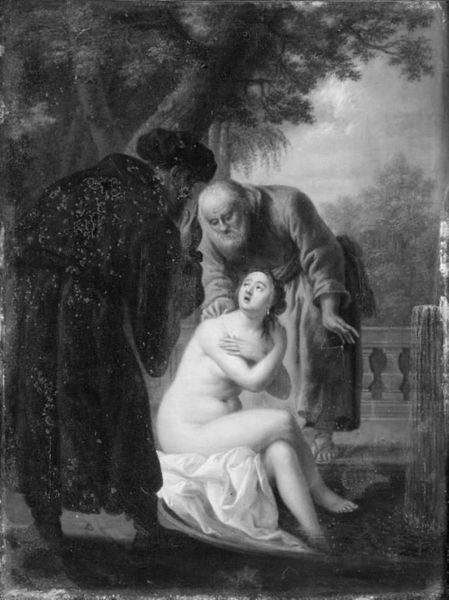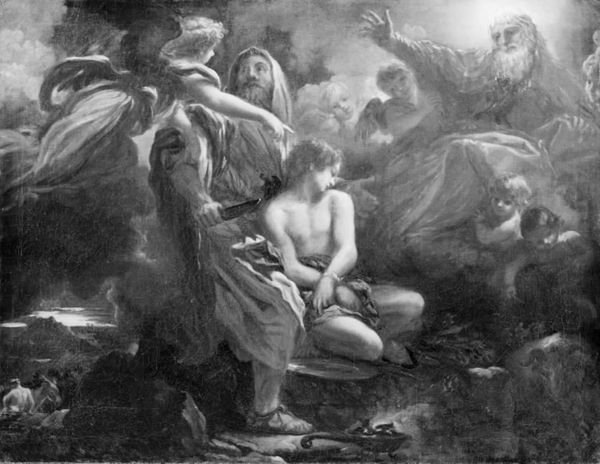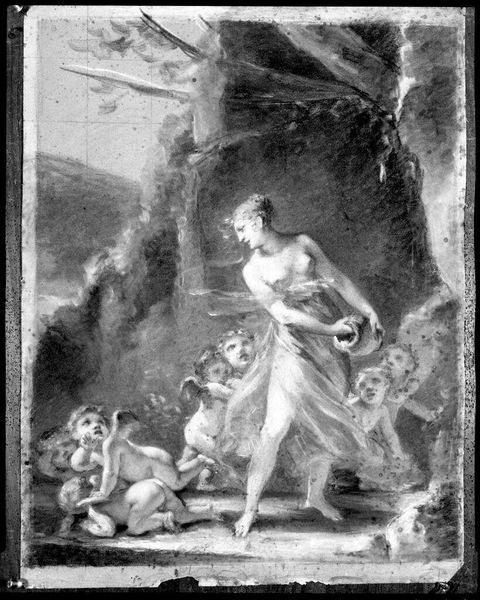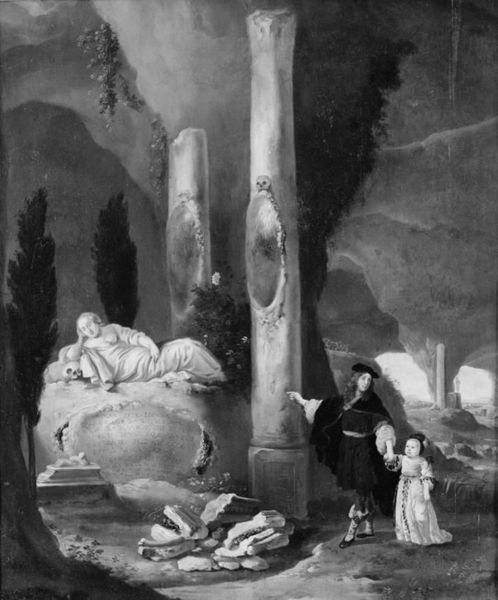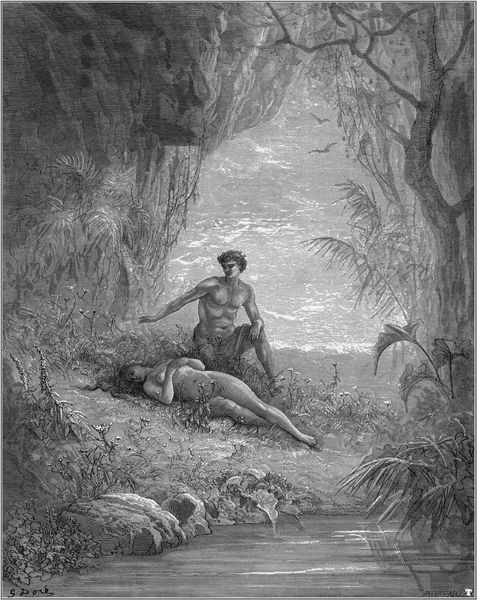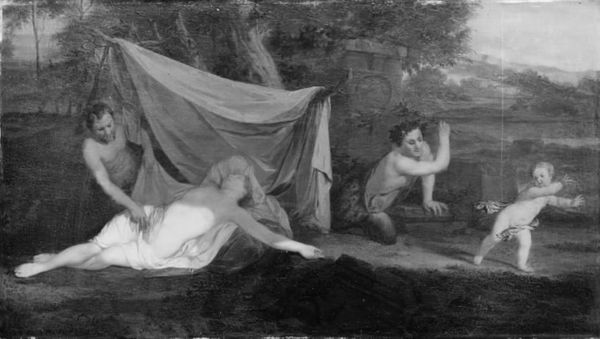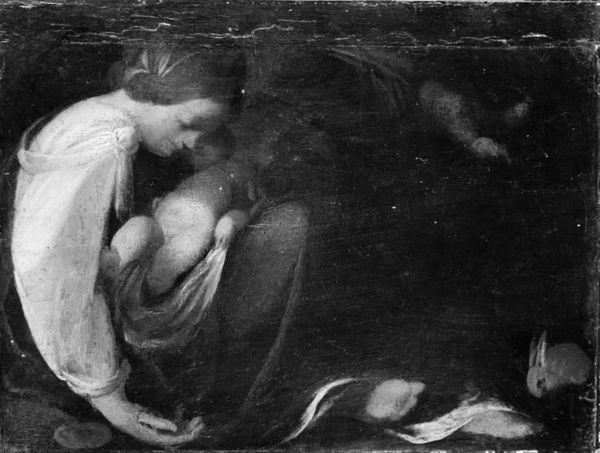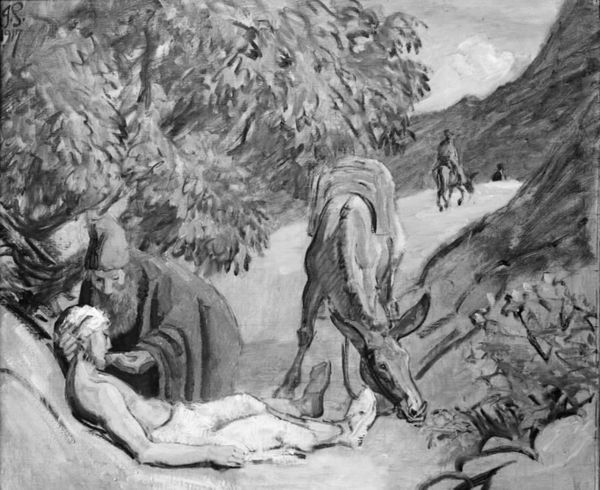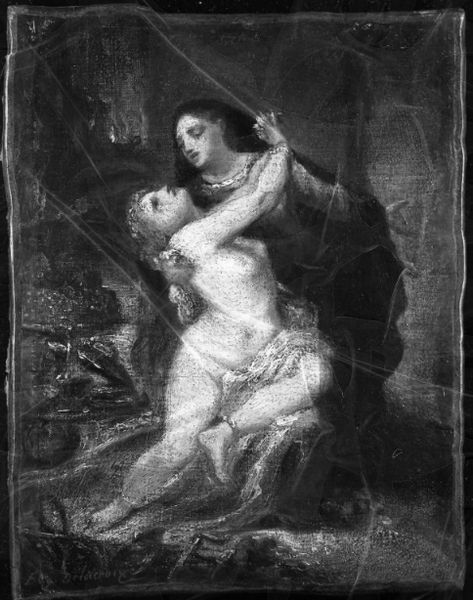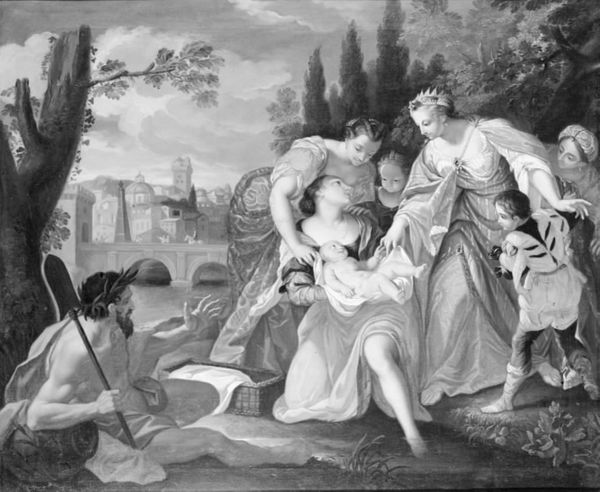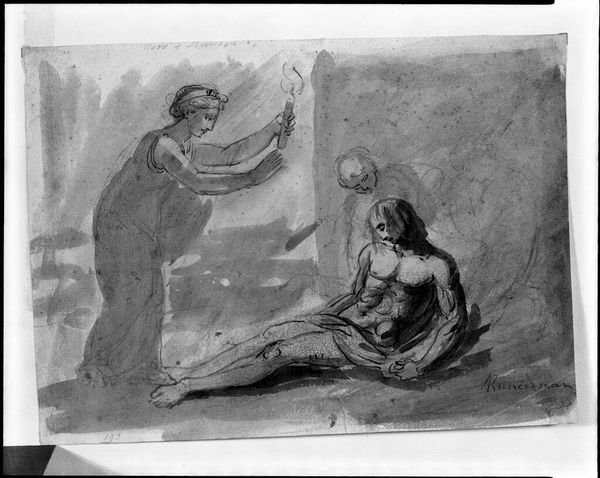
painting, oil-paint
#
allegory
#
narrative-art
#
baroque
#
painting
#
oil-paint
#
landscape
#
charcoal drawing
#
figuration
#
charcoal art
#
surrealism
#
history-painting
#
realism
Dimensions: 63 cm (height) x 78 cm (width) (Netto)
Curator: This somber scene we're observing is a 17th-century oil painting titled "Thisbe's Suicide by the Body Pyramus." Editor: It's arresting, this bleak landscape, punctuated by that distraught figure looming over the fallen man. The muted palette really amplifies the tragedy. Curator: Precisely. Note how the anonymous artist uses a limited tonal range, likely charcoal based as the support medium, to direct our focus. The composition places Thisbe centrally, almost illuminated against the darker foliage and buildings in the background. The diagonal placement of Pyramus's body creates a strong sense of drama and movement leading us toward the tower on the horizon. Editor: So, a purposeful construction to emphasize despair and guide the viewer's emotional experience. As an allegory about love and sacrifice, where does this fit into the visual rhetoric of its era? How was this kind of narrative painting functioning culturally? Was this meant to uphold social order, or critique it? Curator: It's interesting you mention that. Narrative painting during this period served varied purposes. Often it reflected prevailing attitudes on morality. This portrayal of Thisbe certainly seems to underscore the consequences of rash action—her love and desperation lead to self-destruction. Editor: The artist positions this tragedy, drawing it out in such dramatic terms. Is this heightened, almost theatrical emotion indicative of a broader artistic shift? I mean we are teetering on the edge of what will become Romanticism where emotional excess takes the center stage of art production, so I wonder where we stand on this divide and can the narrative drive the movement forward. Curator: Yes, you can already find features such as landscape painting as another emerging genre. We witness hints of realism with the bare feet and hands of Pyramus that contrast with the background structures like the pillars and distant tower. Editor: I find it really fascinating that, even with its dark themes, there's an undeniable formal beauty to the composition. The subtle interplay between shadow and light is very much a key for baroque esthetics that still captures attention centuries later. Curator: Indeed, that fusion of beauty and sorrow allows the piece to resonate so powerfully even today. A grim but compelling tableau from a distant era. Editor: Agreed. It certainly compels you to reflect on art's capability to intertwine personal suffering with enduring formal techniques.
Comments
No comments
Be the first to comment and join the conversation on the ultimate creative platform.
